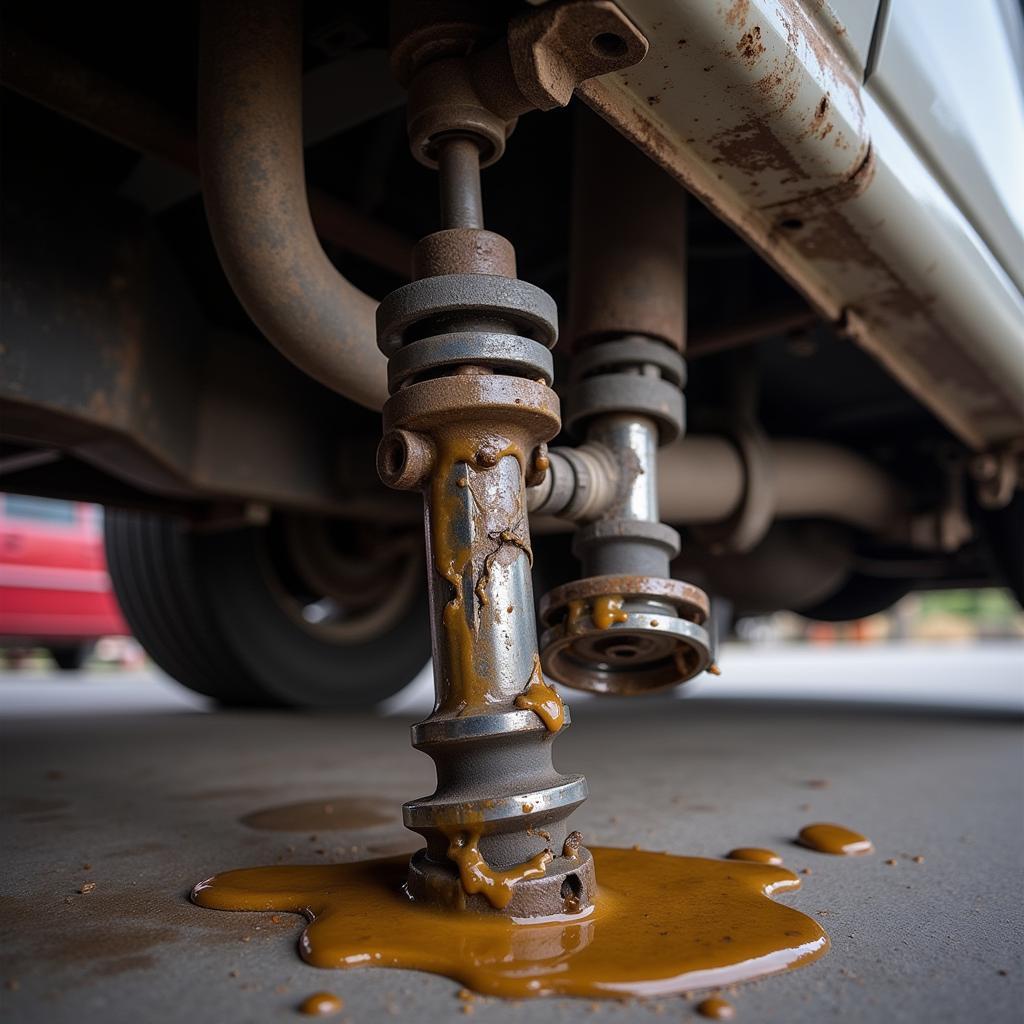Can axle problems make a car jump into first gear? While it might seem unlikely, axle issues can indirectly contribute to this problem, although they’re rarely the direct cause. This article dives into the potential connections between axle problems and your car unexpectedly shifting into first gear, offering insights into diagnosis and solutions.
Understanding the Unlikely Connection: Axles and Gear Shifting
Axle problems typically manifest as vibrations, noises, and handling difficulties. However, severe damage, especially to the CV (Constant Velocity) joints, can create unusual stresses and vibrations that might impact other components. These vibrations can sometimes affect the shift linkage or transmission, potentially causing an unintended shift, even into first gear. This is more of a chain reaction rather than a direct cause-and-effect.
How Can a Broken Axle Affect Shifting?
A severely damaged axle, especially a broken CV joint, can cause extreme vibrations. These intense vibrations can travel through the drivetrain, potentially affecting the shift linkage or the transmission itself. In rare cases, this can create enough disruption to cause the transmission to jump out of gear or even force it into first.
 Broken CV Joint Causing Vibration
Broken CV Joint Causing Vibration
Is a Jumping Gear a Sign of Axle Problems?
While a jumping gear could be a symptom of a severely damaged axle, it’s more likely indicative of issues within the transmission itself or the shift linkage. If your car is jumping into first gear, it’s crucial to thoroughly inspect the transmission, clutch (if applicable), and shift linkage before focusing on the axles.
Diagnosing the Real Culprit
If you suspect axle issues are contributing to your car jumping into first gear, start by inspecting the axles, particularly the CV joints. Look for torn boots, leaking grease, clicking or clunking sounds, and excessive play.
- Check the CV Joints: Inspect the CV joint boots for tears or damage. Leaking grease and clicking sounds are tell-tale signs of CV joint issues.
- Inspect the Shift Linkage: Ensure the linkage is properly connected, lubricated, and adjusted. A loose or damaged linkage can cause erratic shifting.
- Examine the Transmission: Check the transmission fluid level and condition. Low or contaminated fluid can lead to shifting problems.
- Consult a Professional: If you’re unsure, consulting a qualified mechanic is always recommended. They have the tools and expertise to pinpoint the exact issue.
 Car on Lift for Transmission Inspection
Car on Lift for Transmission Inspection
“A thorough inspection is key,” says John Miller, a seasoned automotive engineer with over 20 years of experience. “Don’t jump to conclusions. A jumping gear could be anything from a simple linkage adjustment to a serious transmission problem.”
Fixing the Problem: From Simple Fixes to Complex Repairs
The solution depends on the root cause. A simple linkage adjustment might solve the problem, while a damaged transmission might require extensive repairs or even replacement.
- Shift Linkage Adjustment: If the linkage is loose or misaligned, adjusting it can often resolve shifting issues.
- CV Joint Replacement: Damaged CV joints need to be replaced to prevent further damage and potential safety hazards.
- Transmission Repair/Replacement: Internal transmission problems often require professional repair or replacement.
“Addressing the underlying issue is critical,” adds Miller. “Ignoring a minor problem can lead to more significant and costly repairs down the line.”
Conclusion: Axle Problems and Jumping Gears – A Rare But Possible Connection
While Can Axle Problems Make Car Jump Into First Gear? Yes, it’s possible but less likely compared to other issues like transmission problems. However, severely damaged axles can indirectly contribute to this problem through intense vibrations. A thorough inspection of all related components, including the axles, shift linkage, and transmission, is essential for accurate diagnosis and effective repair. Don’t hesitate to contact us at AutoTipPro for assistance with your car troubles. Give us a call at +1 (641) 206-8880 or visit our office at 500 N St Mary’s St, San Antonio, TX 78205, United States. We’re here to help!







Leave a Reply